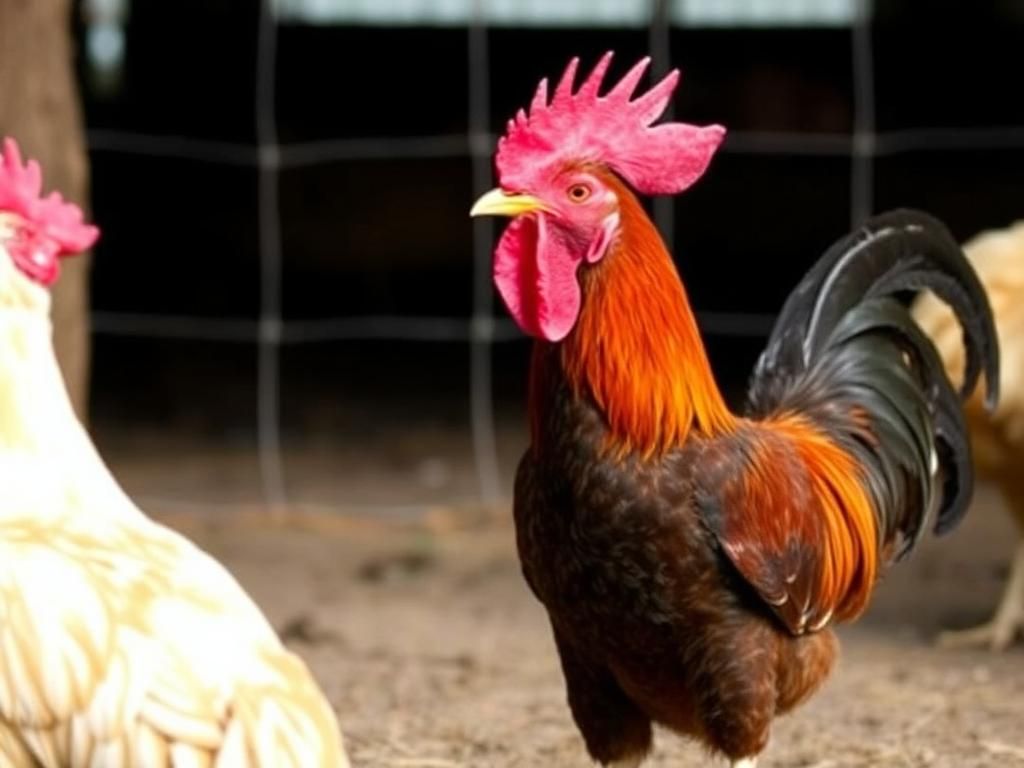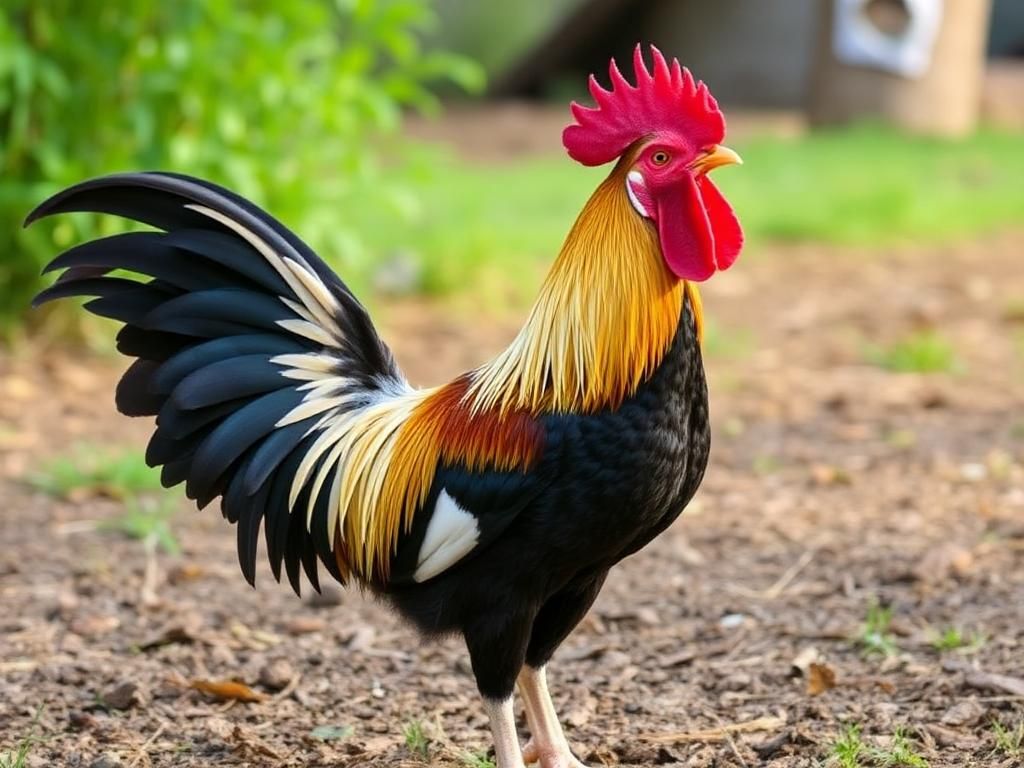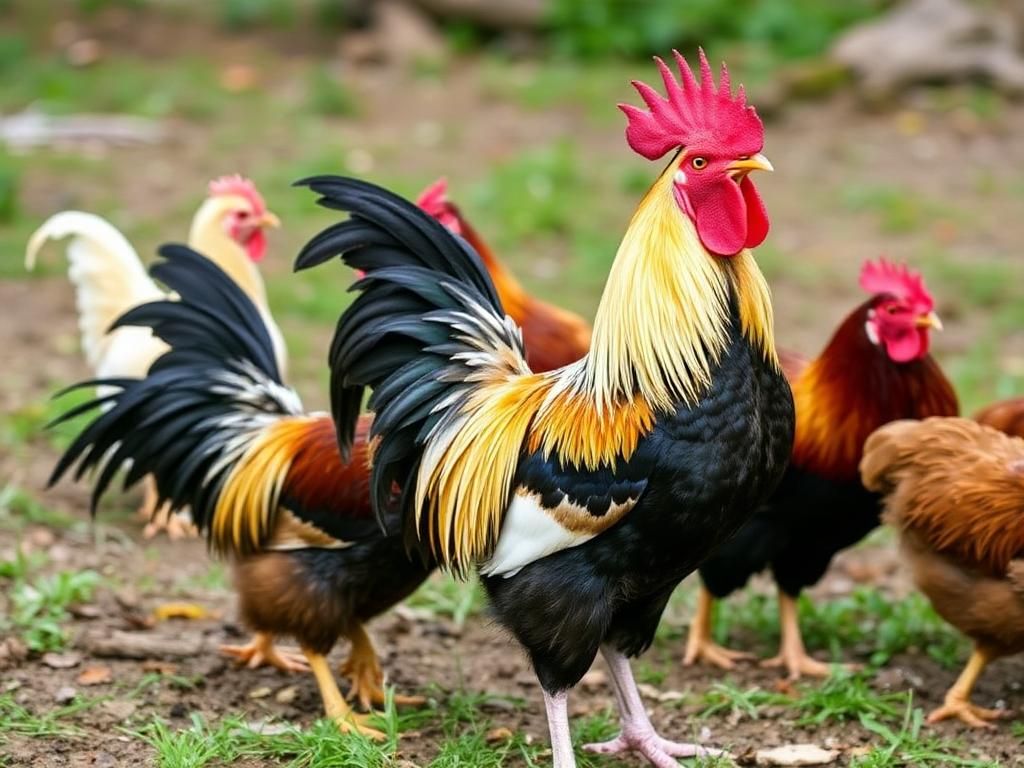The phenomenon of cockerel crowing is not just an auditory signal to wake the dawn; it holds profound significance in the natural world and human society. Cockerels, the male chicks of domestic chickens, exhibit unique vocalizations that serve various purposes within their communities and environments. In this article, we delve into what cockerels are, why their crowing is important, the science behind it, and how it plays a role in agriculture and culture.
Introduction to Cockerel Crowing
Definition of Cockerels
A cockerel is a young male chicken, usually under one year old, distinguished from hens, which are the female chickens. While hens are primarily known for laying eggs, cockerels play an essential role in the dynamics of poultry flocks. They are known for their vibrant plumage, assertive behavior, and, of course, their distinctive crowing, which serves as a vocal repertoire that indicates their presence and status in the social hierarchy.
Importance of Cockerel Crowing
The crowing of cockerels is a natural behavior in poultry that transcends mere communication. In various cultures, cockerel crowing holds symbolic value; it is often associated with the start of a new day, vigilance, and the connection to ancient agricultural practices. Understanding the crowing behavior of cockerels can offer insights into how they interact with their environment and each other.
The Science Behind Crowing
Anatomy of Cockerels
Cockerels possess specialized vocal organs that enable them to produce their characteristic crow. Their syrinx, located at the base of the trachea, is particularly well-developed, allowing for a range of vocalizations. Not all breeds of cockerels have the same crowing capability; some, like the Rhode Island Red, have louder and more distinctive crows compared to quieter breeds.
Physiology of Crowing
The production of sound in cockerels occurs when air passes through the syrinx, creating vibrations that result in various pitches and tones. Factors such as the cockerel’s size, age, and breed can influence the frequency and volume of the crow. Cockerels typically begin to crow around five to six months of age, coinciding with puberty, which heightens their urge to establish territory and attract hens.
Crowing Patterns and Behavior
Cocking tends to follow a predictable pattern; cockerels mostly crow at dawn but can vocalize at any time of day due to various environmental triggers. Factors such as the presence of other animals, changes in light, and even sounds like vehicles or human activity can influence their crowing behavior. Additionally, cockerels maintain a social hierarchy where dominant individuals often crow more frequently and assertively.
Reasons Why Cockerels Crow
Communication
One of the primary reasons behind cockerel crowing is communication. Cockerels use their calls to assert territory and announce their presence to others. Dominant cockerels will often crow loudly to signal their status, while they may also engage in softer vocalizations to attract hens, enhancing their chances of mating.
Biological Clocks
Cockerels naturally align their crowing with their circadian rhythms, which dictate behaviors related to light and darkness. This means that they are often more vocal during the early morning hours—attributed to the dawn chorus. Seasonal changes also affect crowing behavior, where cockerels may crow more frequently during mating seasons, responding to hormonal changes and increased daylight.
Response to External Stimuli
Cockerels are sensitive to their surroundings, triggering crowing in response to external stimuli such as noises, climatic changes, or the presence of potential threats. For example, sounds made by nearby animals or other cockerels can provoke vocal responses, contributing to their social interactions and territorial displays.
The Role of Cockerels in Agriculture

Benefits of Keeping Cockerels
Keeping cockerels on a farm provides several agricultural benefits. They can help control pests in poultry flocks, significantly impacting the breeding dynamics by encouraging natural behaviors. From a genetic standpoint, introducing cockerels increases genetic diversity, promoting healthier and more resilient poultry populations.
Nutritional Contributions
Cockerels also play a vital role in the sustainability of farming practices. They contribute to ecological balance by maintaining a natural food chain. Their foraging habits help manage waste by consuming pests and leftover feed, thus supporting the overall health of other livestock and crops.
Managing Cockerel Crowing in Urban Settings
Legal Considerations
As more people turn to urban farming, the issue of cockerel crowing becomes pertinent, especially concerning local regulations. Noise ordinances may restrict crowing in residential neighborhoods, prompting potential conflicts between cockerel owners and noise-sensitive neighbors. Understanding local noise regulations is crucial for anyone interested in keeping cockerels in urban settings.
Strategies for Reducing Crowing Noise
To mitigate the noise produced by cockerels, various strategies can be employed. Implementing soundproofing methods in coops, such as adding insulation or using thicker materials for walls, can effectively reduce noise levels. Choosing quieter breeds is another viable option, as some breeds are naturally less vocal than others, easing potential tensions in an urban environment.
Community Impact
Engaging with neighbors and fostering a supportive relationship can greatly impact the acceptance of keeping cockerels. Open communication about your intentions, sharing benefits such as producing fresh eggs, and being mindful of crowing times can help in creating a harmonious coexistence with community members. Building community support for urban poultry farming enriches neighborly relations and eases concerns about noise pollution.
Cultural and Symbolic Associations with Cockerel Crowing
Folklore and Myths
In various cultures, cockerel crowing is steeped in folklore and myths. For example, cockerels are often seen as symbols of vigilance and the arrival of dawn in many societies. Myths surrounding cockerels often portray them as protectors against evil spirits, showcasing their significance beyond mere agricultural utility.
Cockerels in Literature and Art
Cockerels have repeatedly graced the pages of literature and various artistic depictions. In storytelling, they symbolize characteristics like bravado, pride, and the passage of time. Artists often portray cockerels in their works to emphasize themes of awakening or new beginnings, illustrating the cultural resonance of these birds.
Conclusion
Summary of Key Points
Understanding cockerel crowing extends beyond simply noting when and how these birds vocalize. The behavior encapsulates essential communications within flocks, numerous physiological adaptations, and deep connections to agricultural practices and cultural symbolism. Cockerels play significant roles in both nature and human societies.
Final Thoughts
As we delve into the behaviors and environments of cockerels, it becomes clear that appreciating their unique crowing habits can enhance our understanding of the animal kingdom. Observing cockerels challenges us to appreciate the nuances of nature and how they intersect with our lives.

Additional Resources
Recommended Reading
For interested individuals seeking further knowledge, consider exploring books such as Poultry Management: The Complete Guide and Storey’s Guide to Raising Chickens for comprehensive insights into poultry management.
Videos and Documentaries
For visual learners, documentaries like “The Backyard Chickens” series provide practical tips and visual aids that enhance understanding of cockerels and their behaviors.
Local and Online Poultry Groups
Joining local or online groups dedicated to poultry enthusiasts can provide networking opportunities, advice from experienced cockerel owners, and support in navigating the challenges and pleasures of raising these magnificent birds.
| Characteristic | Description | Impact on Behavior |
|---|---|---|
| Vocalization | Crowing, clucking | Communication of territory, mating |
| Social Hierarchy | Dominant and submissive roles | Establishes group dynamics |
| Circadian Rhythms | Natural vocalization patterns | Influences crowing times |
| Response to Stimuli | Reactions to noise/light | Causes unexpected crowing |
FAQ
1. Why do cockerels crow?
Cockerels crow primarily to communicate their presence, establish territory, and attract hens.
2. What time do cockerels usually start crowing?
Cockerels typically commence crowing at dawn, though they may vocalize at any time throughout the day.
3. How can I reduce the noise from my cockerel?
To minimize noise, soundproof your coop, select quieter breeds, and ensure proper care to reduce stress triggers.
4. Are all cockerels loud?
No, some breeds of cockerels are naturally quieter than others. It’s essential to research breeds if noise is a concern.
5. Do cockerels crow in response to other sounds?
Yes, cockerels can be triggered to crow by various noises, including other cockerels, animals, or environmental sounds.
6. Is there a legal limit to keeping cockerels in urban areas?
Many urban areas have noise ordinances that may restrict crowing; it’s crucial to check local laws regarding poultry ownership.
7. Can I have more than one cockerel in my flock?
Yes, but be mindful of social hierarchies; having multiple cockerels can lead to fighting or stress within the flock.
8. How do I know if my cockerel is crowing too much?
Continuous or excessive crowing can be a sign of distress or an environmental trigger, warranting examination of their conditions.
9. What nutritional contributions do cockerels provide?
Cockerels aid in pest control and contribute to sustainability through natural foraging.
10. Are there any myths associated with cockerels?
Yes, various cultures have myths about cockerels, often symbolizing vigilance or the onset of dawn.
